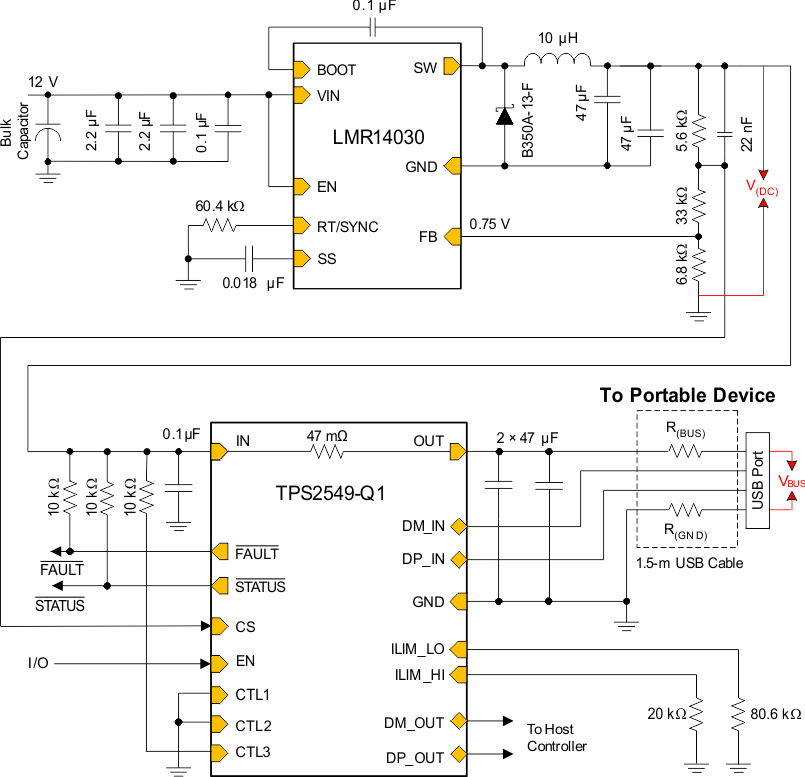SLUSCE3C October 2015 – August 2020 TPS2549-Q1
PRODUCTION DATA
- 1 Features
- 2 Applications
- 3 Description
- 4 Revision History
- 5 Pin Configuration and Functions
- 6 Specifications
- 7 Parameter Measurement Information
-
8 Detailed Description
- 8.1 Overview
- 8.2 Functional Block Diagram
- 8.3 Feature Description
- 8.4 Device Functional Modes
- 9 Application and Implementation
- 10Power Supply Recommendations
- 11Layout
- 12Device and Documentation Support
- 13Mechanical, Packaging, and Orderable Information
Package Options
Mechanical Data (Package|Pins)
- RTE|16
Thermal pad, mechanical data (Package|Pins)
- RTE|16
Orderable Information
9.2 Typical Application
Automotive USB port charging requires a voltage regulator to convert battery voltage to 5-V VBUS output. Because the VBUS, D+, and D– pins of a USB port are exposed, there is a need for a protection device that has VBUS overcurrent and D+ and D– ESD protection. An additional need is a charging controller with integrated CDP and DCP charging protocols on D+ and D– to support fast charging. A schematic of an application circuit with cable compensation is shown in Figure 9-1. An LMR14030 device is used as the voltage regulator, and the TPS2549-Q1 device is used as the charging controller with protection features.
Nowadays, automotive products have higher safety requirements; the exposed pins including VBUS / D+ / D- may also short to battery in real applications. More details can be learned through this application note: SLVAEI5. The TPS2549-Q1 has short to VBUS protection, but does not support short to battery protection. If short circuit to battery protection is needed, the TPS254900A-Q1 or TPS25830-Q1 are recommended options.
 Figure 9-1 Typical Application Schematic: USB Port Charging With Cable Compensation
Figure 9-1 Typical Application Schematic: USB Port Charging With Cable Compensation